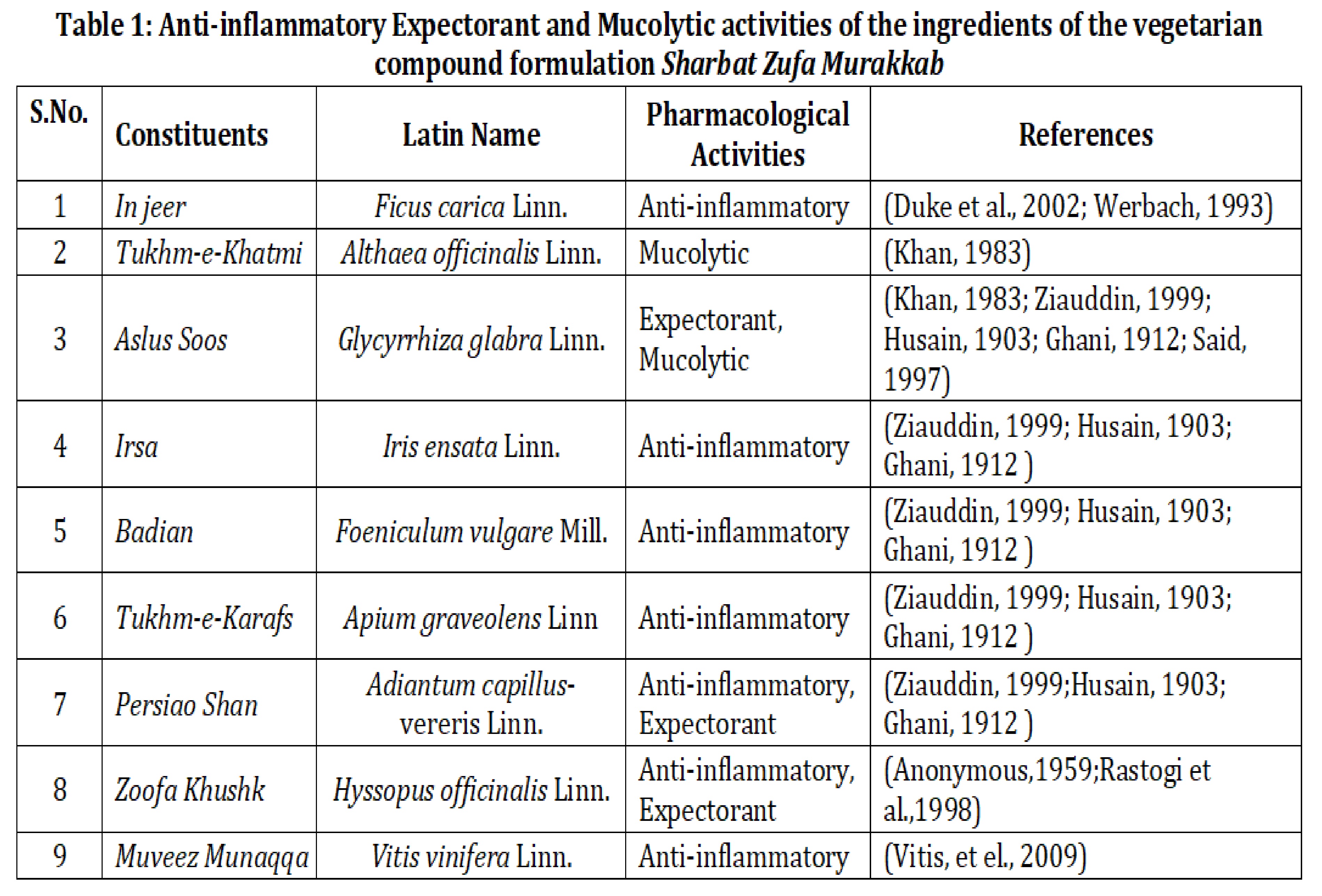Sharbat Zoofa Murakkab, A Promising Unani Formulation for Sual (Cough)
DOI:
https://doi.org/10.47070/ayushdhara.v10iSuppl4.1342Keywords:
Sharbat Zufa Murakkab, Sual CoughAbstract
It has been described that Sual (cough) is the movement of lungs to remove or reduce the painful stress on the lungs). Cough is a physiologically useful protective reflex that clears the respiratory tract. It occurs due to stimulation of chemo receptors in throat, respiratory passages or stretch receptors in the lungs. According to Unani scholars, Sual (cough) is an act by which Tabiyat removes Aziyat (irritating substances) from the lungs, cough with mucus and sputum. It affects mainly quality of life, works productivity and public health resources etc. The drugs available in the modern medicine produce more or less side effects in the human body. The Unani classical formulation is traditionally used for the treatment of cough, early stages of asthma and useful in bronchial Asthma, phlegmatic cough. Expel phlegm from the chest. It is used to clear mucus from the chest and clear chest congestion. It is 100% natural and vegetarian product. No side effects of Sharbat Zoofa Murakkab mentioned and reported in Unani classical literature and a clinical study was conducted by the Central Council for Research in Unani Medicine under Ministry of AYUSH, Government of India, more studies are required to validate the Pharmacopeial formulation on large scale.
Downloads

Downloads
Published
Issue
Section
License
Copyright (c) 2023 AYUSHDHARA

This work is licensed under a Creative Commons Attribution-NonCommercial-ShareAlike 4.0 International License.


